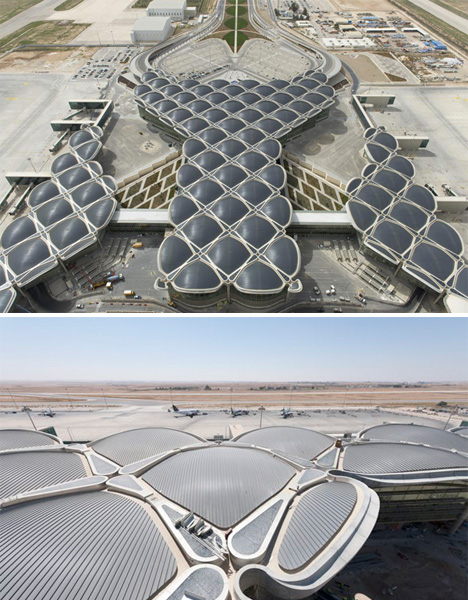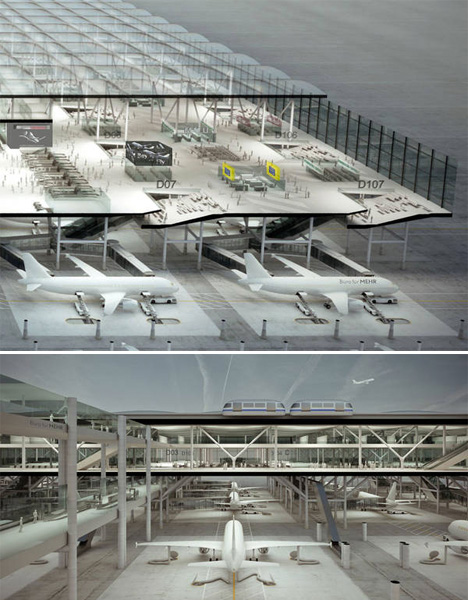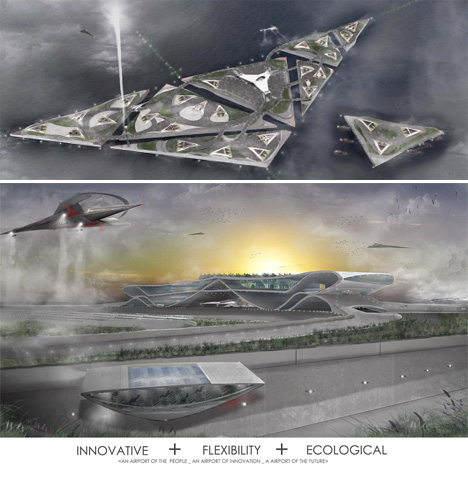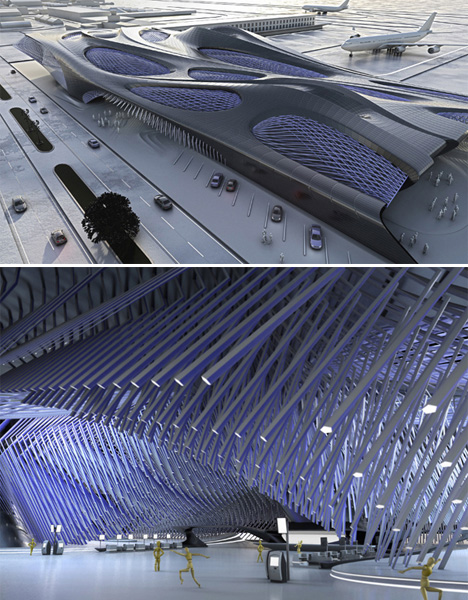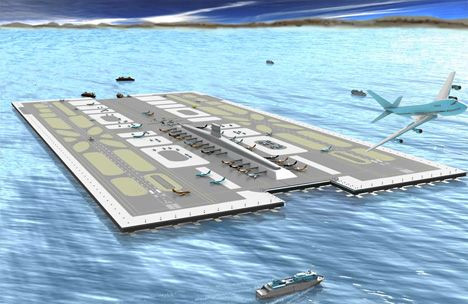Modular Expandable Airport Concept by Foster + Partners
Airport expansions tend to take many years and many millions of dollars to complete, often causing further delays when the whole point is to meet growing demand. Architecture firm Foster + Partners realized that an easily expandable cellular design would enable the Queen Alia International Airport in Jordan to continue to grow in the future while also being environmentally sound. The concrete modules have a high thermal mass for passive heating and cooling. Each dome of the tessellated roof canopy is a semi-autonomous unit.
Drive-Through Airport Concept
How much more efficient would airports be if planes were to simply ‘drive’ through the ground level of an elevated airport structure, passing through the arrival, servicing and departure areas as if going through a car wash? This intriguing idea by architect Miklos Deri would reduce the required number of gates, cutting the airport’s total footprint, and speed up processing to fit in more flights per day.
LDN Delta Airport by Oliver Andrew
Another floating airport idea for London creates a delta of prefabricated, mass-produced artificial islands in the Thames Estuary upstream from London. Served by public transport only, the airport would require no parking garages, nor even any runways, as it’s envisioned for vertical takeoff hypersonic jets. It would even get its power from tidal currents rather than conventional electricity and gas. This concept by Oliver Andrew was the winner of the Fentress Airport of the Future contest.
Hypostyle Hall Terminal Concept by Stephan Sobl
This airport concept by Stephan Sobl takes the classic hypostyle hall design firmly into the 21st century to create dynamic interior spaces. Hypostyle halls are spaces in which the roof is supported by columns. In this case, the columns are not so distinct, touching down to the ground in the form of dense field of smaller, stick-like shapes.
Floating Airport for San Diego
San Diego could put the Pacific Ocean to use for a much-needed airport expansion, as envisioned by lawyer Adam Englund. Inspired by oil rigs, the floating platform would be located 10 miles off the coast and also function as a three-square-mile artificial reef.
